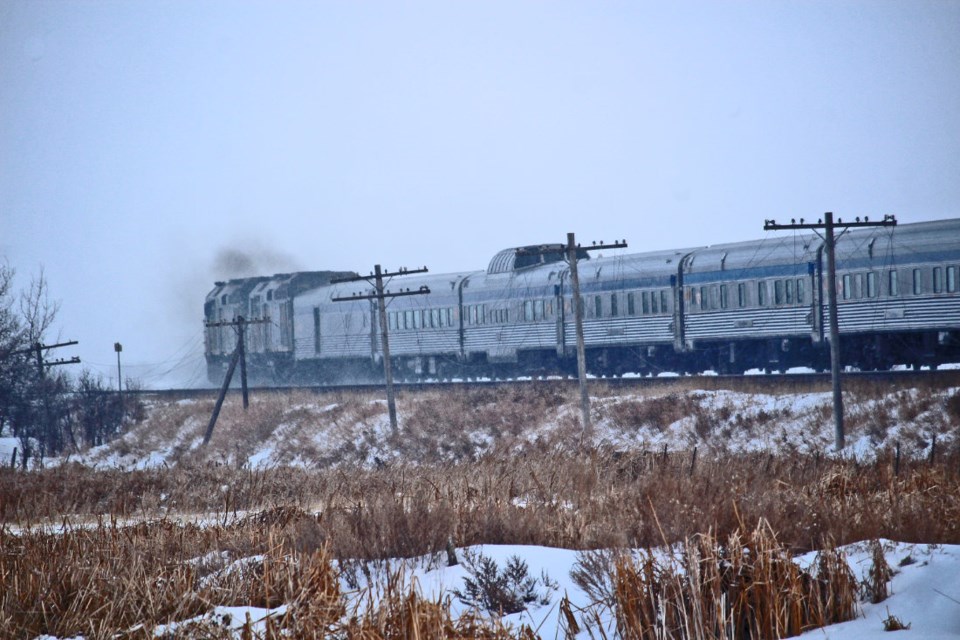When Transport Minister Omar Alghabra appeared before the House of Commons Standing Committee on Transport, Infrastructure and Communities on Jan. 12, he said he wasn’t hiding from the multiple meltdowns of Canada’s airlines and VIA Rail over the Christmas holidays. But he was.
Alghabra and his government are hiding from an inevitable confrontation with more than a century of political and corporate blunders that are now cumulatively causing Canada’s transportation “chickens” to come home to roost. The storms that hit B.C. and eastern Canada at Christmas revealed we have a disjointed, ineffective and subsidy-soaked system that lacks resiliency and reliability.
Decades of indiscriminate public funding, self-destructive competition between the modes and little accountability are just a few of the reasons for a series of transportation failures affecting Canada economically, socially and environmentally.
It started at the dawn of the railway era in the mid-19th century. Promoters required public assistance to build costly railways in a far flung, sparsely populated and physically punishing country. Pliant governments provided land grants, cash subsidies, loans and bond guarantees for these capital-intensive lines, often because they saw votes in railway building. Their quid pro quo for this public assistance included route changes to serve certain ridings and freight rate reductions to buy voter favour.
If politicians couldn’t get private railways to take on politically expedient railways, they created government corporations to do it, usually with dire financial, patronage and operational consequences. Two examples were the poorly located Intercolonial Railway from Quebec to Halifax and the recklessly optimistic National Transcontinental Railway from Moncton to Winnipeg on a route through traffic-thin northern Quebec and Ontario.
When all but the Canadian Pacific (CP) strands of this overbuilt web of rails collapsed between 1917 and 1923, Ottawa created Canadian National (CN) to fuse and fix the bankrupt railways and the government lines … and then encouraged further network growth.
As the 1933 Royal Commission on Transportation observed, CP responded “in the ways habitual to all competitive railways” by expanding, often with public assistance.
By the time this second overinflated railway scheme deflated in the depression of the 1930s, the automobile was well on its way to a position of mass popularity. Provincial politicians rushed to fund highways to ensure votes by breaking what they invariably described as the railway monopoly. Trucking went along on this taxpayer-funded ride, gobbling up more and more railway freight revenue as the highway system grew at public expense.
Soon after the subsidized highway steamroller was born, the feds began to generously fund airports and air services. Transport Minister C.D. Howe quashed a CP/CN plan to launch a jointly-owned airline coordinated with their trains, steamships and hotels. Instead, he compelled CN to help establish a government-owned airline, Trans-Canada Airlines (TCA), which competed with the struggling passenger trains of both railways.
To keep this predecessor of Air Canada financially aloft, Howe ordered much of the mail shifted from the trains to his loss-making airline at high cost to the post office, starting with the high revenue first class mail, even on routes where TCA’s planes couldn’t get it to its destination any faster than the network of overnight trains then being operated by CP and CN. This infuriated the postmaster general, who had to explain the high costs and low revenues of this “all-up” first class mail program when he was grilled by the unenlightened members of various parliamentary committees.
The political rush to fund aviation and highways not only drove transportation spending skyward before and after the Second World War, it made a mockery of the concept of reasonable cost recovery from public investment and destabilized the railways.
This toxic transportation brew has been repeated many times since. It continues today. Billions in non-recoverable funding went to so-called pandemic relief support for some portions – but not all – of the transportation system. This has been accompanied by announcements of highly questionable public-private partnership mega projects, such as VIA’s high-frequency rail proposal for the Quebec-Windsor Corridor. This dream scheme has received nearly $1 billion in federal advances and commitments without even producing a plan. If built, it would require an amount the transport minister refuses to even estimate.
“One of these days, somebody will have to sit down and figure out what transportation we need, and what we can afford,” a federal Board of Transport commissioner told a reporter in 1961.
Sixty-two years later, that overdue decision still hasn’t been made. Instead, Transport Minister Alghabra offers platitudes and promises of dazzling future projects when corrective, non-partisan action is urgently required. The Christmas travel meltdowns and rising public anger prove that.
Will our elected officials ever decisively resolve this long standing national transportation dilemma? Hiding from the truth and metaphorically rearranging the deck chairs on Canada’s transportation equivalent of the R.M.S. Titanic yet another time isn’t the answer. It never was.
A derailment occurred at Guernsey, Sask. near Lanigan on Hwy 16, where an estimate of oil spilled in a fiery train derailment in rural Saskatchewan has increased to 1.6 million litres. Hear Gormick interview here.
Greg Gormick is a transportation analyst and policy adviser whose clients have included CP, CN, VIA and elected officials of four political parties. His forthcoming book is Railroaded: The Life, Near-Death and Future of Canada’s Passenger Trains.




